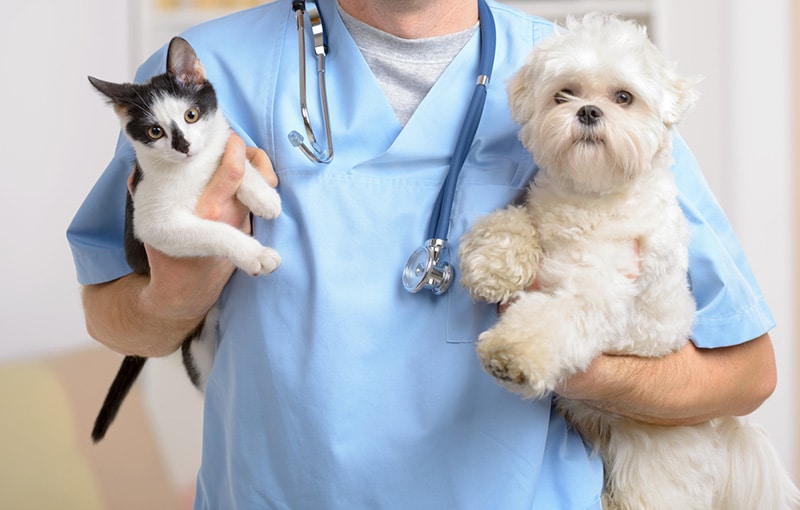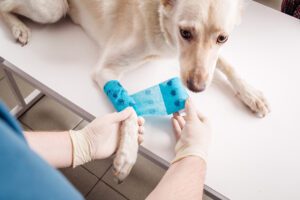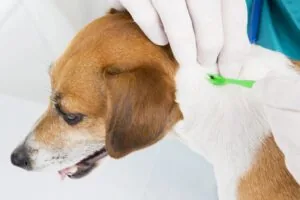What You Should Know About Spaying/Neutering Your Pet

Do you dream of having a houseful of puppies or kittens? If you don’t now, there was probably a time as a child that you did! The many puppy and kitten calendars on the market make it obvious that most of us find baby pets to be completely adorable.
But unfortunately, we do not all of us have the space, time and money to devote to the care of a fresh group of adorable newborn pups or kittens every couple of months. For this reason, many pet parents have procedures done to sterilize their domesticated furry friends.
But if you have never had your pet spayed or neutered before, you might be wondering first whether it could be dangerous for your pet, second, what the procedures entail, and thirdly, what the difference is between spaying and neutering.
We are here to answer those questions for you! We’ll address the definition of the terms and what the procedures entail first.
What is the Difference Between Spaying and Neutering?
Spaying and neutering do virtually the same thing. Both procedures are done to sterilize animals. But spaying is for female pets and neutering is for male pets.
Spaying and neutering procedures will be similar for cats and dogs respectively, with the difference being related to the gender only.
We’ll get into what happens with spaying and what happens with neutering below!
What Exactly is Spaying?
What Exactly is Spaying and How is it Beneficial?
For those who feel they would not be able to put in the time and money necessary in caring for a pet’s potential offspring, spaying is a good choice.
Spaying prevents conception and also has some other surprising health benefits. Any diseases that are associated with the female uterus will be highly unlikely to affect your pet!
A side benefit to spaying your female pet is the fact that spaying will mean your female pet will no longer go into “heat.” In “heat” your female pet will cause other male animals around her to go a little bit crazy and will also result in her possibly making messes around the house she normally would not. So, a female pet who has been spayed is easier to care for.
In order to prevent conception of offspring, the female organs that allow for reproduction must be removed. During a spaying procedure, the uterus and the ovaries are removed in order to prevent conception. Whether you have a female dog who needs this done or a female cat, the goal of the procedure–to remove the ovaries and uterus–are the same.
What is Neutering?
The goal of neutering is to make a male animal incapable of reproducing. In a neutering procedure, a male animal’s testicles are removed so that he can’t produce offspring.
The primary benefit of neutering your male pet is somewhat obvious–you won’t have to be responsible for populating your neighborhood with baby animals that may or may not get the care they need. But there are other benefits as well. You reduce the risk of having a pet who goes missing while chasing a female in “heat.” And when you take your pet to go out for walk, he will not be so heavily inclined to “mark his territory” by racing to urinate at every passing pole or post!
In addition, the testosterone levels in your male pet will lower significantly after such a procedure. Lower testosterone usually makes for a less aggressive animal: aggression and the need for dominance in many male animals is often directly related to their testosterone level.
A neutered animal is often less likely to get into fights or be attacked by other animals and is less likely to suffer from any testicle-related illnesses common in older pets such as enlarged prostate, testicular cancer, or perianal fistula.
What Should I Know About the Procedure?
Possibly the most important question of the day is whether or not neutering and spaying is safe for a dog or cat to undergo.
Anytime an animal (or a person for that matter) has to undergo anesthesia, there is some risk involved. But modern medical practices make surgical procedures very safe. Some tips for helping your pet before and after surgery can help the procedure run even more smoothly for your pet.
These tips include:
- Make sure your puppy or kitten, dog or cat, gets plenty of rest the days preceding the surgery, and keep your pet indoors and resting for about two weeks after the procedure.
- Make sure your pets have no food or water after midnight on the day before surgery
- Keep your pet away from other animals during his recovery period. Other animals might excite your pet and cause him to want to jump around and play too much, over-exhausting himself.
- Inspect the incision area daily to make sure it does not re-open. If it does, contact your vet right away. Also, try to prevent your pet from licking the area as much as possible. When an animal licks an incision area, the activity can cause infection.
- Lastly, ask your vet for other post-surgery advice to follow and stick to the info you receive!
It’s generally recommended that spaying or neutering be done between 6 and 9 months of age but talk to your vet about the best time to do so for you and your pet.
. . .
During the month of April, we are offering a 20% discount on spaying and neutering procedures. Contact our office if you have questions about the procedure for your pet!

Share This Post
Recent Posts
About Shallowford Animal Hospital
Shallowford Animal Hospital and The Pet Spa at Shallowford are dedicated to the exceptional, compassionate care your pet deserves. Pets hold a very special place in our families, and we treat yours like our own.



